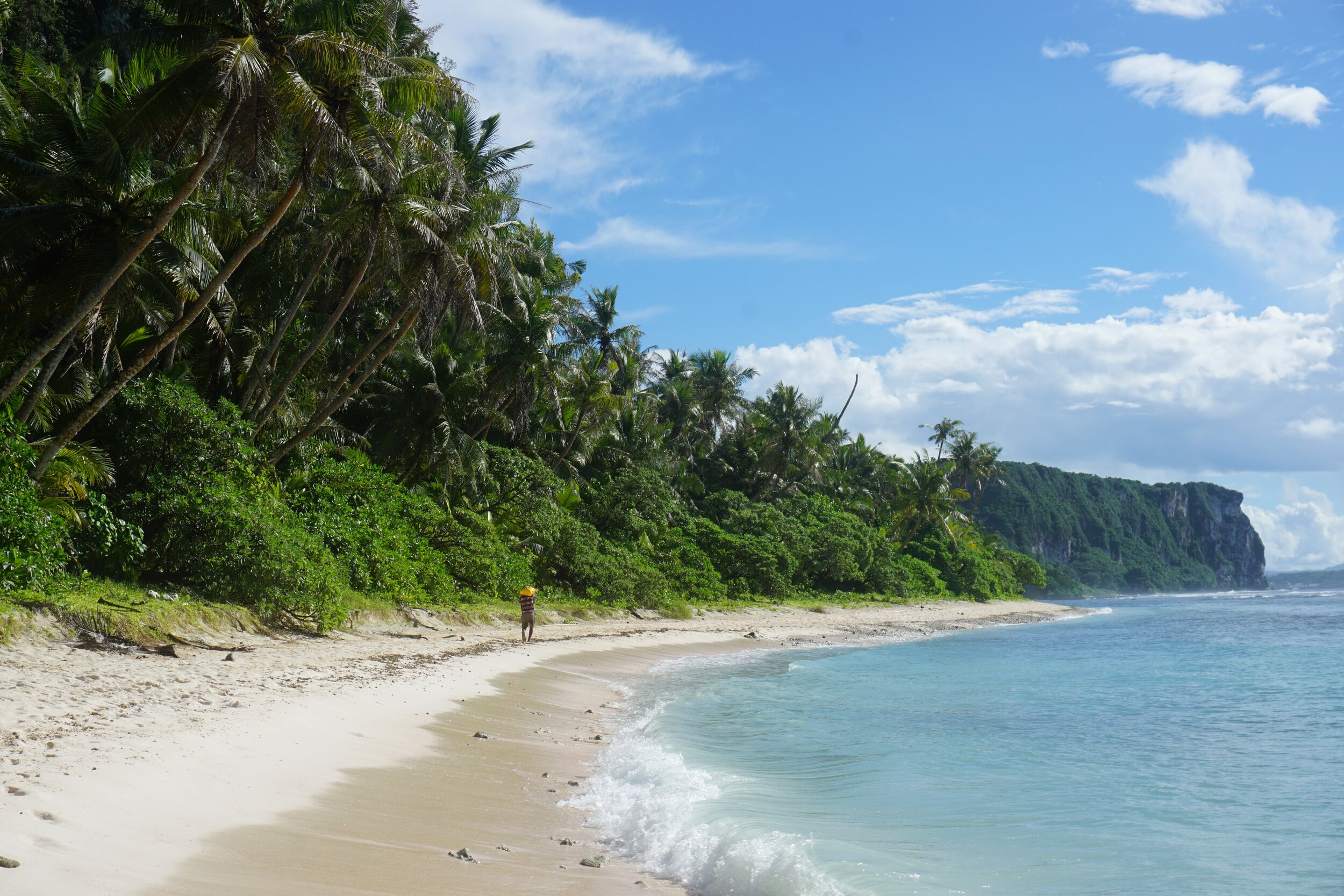Rave culture in Guam: the Pacific island between Japan and Australia
Film producer Trey Smith: Guam native and London expat
At a house party sometime last year, I met a film producer called Trey. We got chatting, and soon got onto the subject of Guam, the Island he was from.
Before long, we found ourselves in a fascinating, deep conversation about his Island’s rich culture. So much so, that it got to the point where I said hold up! We should share your story on Rave Report.
Lucky for me, he was keen - so we went into the other room and did the interview on my phone’s voice recorder. Off the cuff- around 6am in the morning!
In this early morning chat, Trey shares the past and present of Guam music culture.
We explored how the island’s indigenous culture has been reconciled in recent years by cultural music practitioners; what the first ever rave in Guam was like, and some of the beautiful ways local artists mentor each other on the island. Enjoy! 💚
Tanguisson Beach, Guam.
Hey Trey! How would you describe Guam’s culture in a nutshell?
Guam is halfway between Japan and Australia. It’s 30 miles long and 5 miles wide at its widest point. There's about 100,000 people there, and everyone knows everyone!
“Guam has a strong indigenous history which is being rebuilt right now”.
The island was colonised by the Spanish in 1632 and they’ve really influenced the traditional culture. So much that there's not really any record of any time before the Spanish were there...despite the fact the indigenous Chamorro people lived on the island for 3,000 years.
Since the 1800s, it has remained an American territory, and the Japanese have also occupied the island.
How The U.S. Territory Of Guam Became An American Colony | AJ+
I see - so has that influenced the music too?
Totally. The history of music in Guam starts in Spanish music. What we know of the music in Guam is based around the guitar. There’s also a lot of Flamenco instruments, and a strong Spanish dance influence. But the people of Guam have taken it and made their own.
have locals found ways to reconnect with Guam’s pre colonised culture?
Yes! Frank León Guerrero is THE prolific songwriter of the island. He’s 70 years old and he's trying to re-instill a sense of cultural pride. He’s taken great steps to fill in the missing history of the island.
He does that through music and dance choreography. A lot of the music takes cues from the islands around Guam, who were able to maintain their culture. Frank would sit down and go through records, figuring out what instruments people used.
He combines that with Guam’s strong oral tradition and dance practises: bringing it all together to make something new. His cultural practitioner group is called ‘Taotao Tano’, which means ‘people of the land’ in the Chamorro language.
Frank and his Cultural Practictioner Group, Taotao Tano. Photo credit: Guampedia
So he’s reconciling elements of the indiginous culture through music and research - amazing! I’d love to learn more about the youth culture of Guam...is there an underground scene?
“the predominant genre in guam today is reggae. it’s really fuelled the youth culture.
Everyone loves the laid back vibe to the music. It's also introduced a lot of other genres to the island. Just by liking Reggae and Dancehall, they’ve been introduced to electronic remixes. Dubstep, Ragga dub… They love that! Because it's something new.
Is that quite predominant?
Yeah, it’s a new thing. The idea of raving in itself was something well formed and brought to Guam from America as a commercial entity, but it's formed through reggae. Guam’s new generation have kept the rave spirit alive, along with the island spirit at the same time!
How long has that been going on for?
“I was on the first ever rave in Guam! The Chamorro Island festival”.
Photo Credit: Electronic Island Festival
No way! What was it like?!
It was unlike any other rave I've been to! You get there and it is packaged in this commercialised EDM kind of way. Steve Aoki headlined the first time round.
“you only get one headliner so the rest of the lineup are locals! they get to play for the 20,000 people who come”.
Tell me more about the local talent?
There's a bunch of modern crews. The town is very multifaceted; it’s such a rich culture.
My friend Yoshi Goliat (Full Cast Flip) is a rapper and DJ, who mixes electronic music with hip hop. He plays around all the different clubs on the Island, and he played before Steve Ioke! He’s moved to the USA recently to give it a shot over there.
Other artists include Alpha One and Jed Cruise who produce RNB tinged hip hop.
“The local rappers mentor a lot of the guys on the island to do creative things!”
Oh yeah, and I couldn’t forget Pia Mia. She’s a little pop star signed to Republic, and she’s reppin Guam all the time. I would actually say she's put Guam on the world stage in a sense, because she’s had charting hits.
She’s in America but comes back to Guam all the time. She sits down with the artists there and leads the way.
“It's always been a culture of support”.
Pop star Pia Mia: Guam’s most famous export. Photo Credit: Solmaz Sabriel
I’m not surprised everyone’s lovely when you’ve grown up within such a beautiful island culture!
Exactly! You don't have a problem when it's 90 degrees outside and nothing else to worry about. Eating BBQ on the beach, and singing songs drunk on Bud light is the only way I wanna go!






